Once again, Arizona is a swing state in the presidential election. In previous elections, including the hotly contested 2020 presidential election, Democratic candidates won top-of-the-ticket races against controversial Republican candidates, but lower-level contests remained firmly in Republican hands. So, what can a political history of Arizona tell us about what may happen in November?
Let’s start with geography. Election outcomes in Arizona often are determined by Phoenix and its suburbs (e.g. Maricopa County) where its 2.4 million voters comprise 59% of Arizona’s registered voters. The Phoenix metro area, once considered strongly Republican, now has pockets of Democratic support. Pima County, home to Tucson, is the second-largest county (at 15% of Arizona voters) and tends to favor Democratic candidates. While the remaining 13 mostly rural counties are viewed as conservative and Republican-leaning, there are exceptions. In Santa Cruz County with a mostly Latino population and Apache County with a mostly Native American population, registered Democrats outnumber Republicans.
How demographic groups in Arizona will vote for president mostly mirrors national trends, such as the influence of a gender gap and the impact of younger voters. Two demographic groups, however, may be more important in Arizona. Nearly one in four voters in Arizona are Latino. While Latinos in the past tended to support Democratic candidates, like the nation as a whole, some Arizona Latinos may be moving into the Republican Party. Members of the Church of Jesus Christ of Latter-day Saints is a second group that could determine Arizona’s presidential election. Mormons compose five percent of Arizona’s population, typically voting for Republican candidates. However, some Mormons are offended by former President Donald Trump’s character, and a few prominent Mormons are speaking out. Former U.S. Senator Jeff Flake (R-Ariz.) announced he will vote for Kamala Harris. Former Arizona House Speaker Rusty Bowers (R-Ariz.)—who rejected Trump’s pleas to delay certification of Arizona’s 2020 presidential election—indicated he would not vote for either presidential candidate. How many Mormons decide not to vote for Trump could determine the outcome in a close presidential election.
Arizona’s open-seat Senate race pits MAGA Republican Kari Lake against Democrat Ruben Gallego. In 2022, Lake lost the governor’s contest by 17,000 votes but continues to dispute that outcome. Democrats nominated U.S. Representative Ruben Gallego from the Phoenix area, the Democratically leaning third congressional district. In his Senate campaign, Gallego adopted more moderate positions. He touts his background in the military and focuses on issues such as immigration reform and support for reproductive rights. Lake repeats campaign themes from 2022 with an emphasis on curbing illegal immigration through the building of the border wall. Much of the candidates’ and outside spending advertising, however, is negative with Gallego and Democratic groups painting Lake as too extreme on abortion and Lake tying Gallego to unfavorable Biden policies which she blames for high inflation and high interest rates. Gallego has been more successful in raising campaign funds with $31.9 million versus $10.3 million for Lake in the July reports. Gallego has benefited more from outside group spending.
Two of Arizona’s nine congressional districts are competitive. In district one, located in suburban Phoenix, seven-term Republican David Schweikert faces off against Democrat Amish Shah, a physician and member of the Arizona House of Representatives. While a seven-term incumbent would normally be viewed as safe, Schweikert barely won in 2022 with a margin of less than one percentage point. Schweikert has outraised Shah $2.7 million to $1.5 million but each has benefited from independent expenditures. Issues in the first congressional district reflect national themes. Schweikert focuses on his role in the House Ways and Means committee as key for lowering taxes and argues for tougher border controls. Shah touts his bipartisan record in the state legislature and supports reproductive rights, specific border issues such as tougher penalties for smuggling fentanyl, and protecting Social Security and Medicare.
In the sixth district, Republican incumbent Juan Ciscomani is in a rematch with Democratic nominee Kristin Engel. In 2022, when the seat was open, Ciscomani won by 1.5 percentage points. Arizona’s sixth district is competitive because it combines the eastern half of Democratic-leaning Tucson with rural Republican-leaning Cochise County. Both candidates raised approximately the same amount of money at $4.4 million. Both congressional parties’ PACS also are active in the district. Ciscomani paints Engel as being soft on crime and border issues while Engel describes Ciscomani as being too conservative on reproductive rights. Each also claims that the other distorts their views.
Finally, an intriguing question is whether ballot propositions will mobilize either liberal or conservative voters. One initiative would enshrine abortion rights in the state constitution. If this initiative mobilizes pro-choice voters, it could affect the outcome of the president, House and Senate contests. This could even affect the retention election for two of Arizona’s Supreme Court judges. In 2024, Arizona had two different abortion laws. One was the 1864 territorial law banning abortion. The second was a 2022 law with a 15-week ban. When signing the 2022 law, Republican Gov. Doug Ducey indicated it would not supplant the 1864 law. In deciding which law took precedence, the Arizona Supreme Court by a 4-2 vote upheld Arizona’s 1864 law. After the uproar over the court ruling, the state legislature voted to vacate the 1864 law. Judicial retention elections are usually noncontroversial, so a vote to oust two judges would be an upset.
In total, 13 propositions appear on Arizona’s ballot, with eleven referred by the state legislature in an ongoing battle between a Republican-controlled state legislature and Democratic governor Katie Hobbs. One consequence of these numerous ballot propositions is that in some Arizona counties, voters will receive a two-page ballot with contests listed on the front and back of each, potentially delaying the vote count. Another consequence is a concerted effort by Democrats to gain the two seats necessary in both chambers to obtain majority status for the first time in decades.
In 2020, Biden won Arizona by about 11,000 votes or 0.3% of the vote. Polling at this point gives Trump a narrow lead in the state but in a race this tight any of the aforementioned—geography, the Senate race, the two House races in swing districts or the ballot propositions, especially the one on abortion—could be critical to winning this very closely contested state.
The Brookings Institution is committed to quality, independence, and impact.
We are supported by a diverse array of funders. In line with our values and policies, each Brookings publication represents the sole views of its author(s).

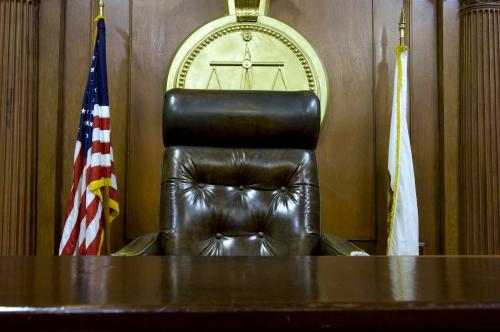
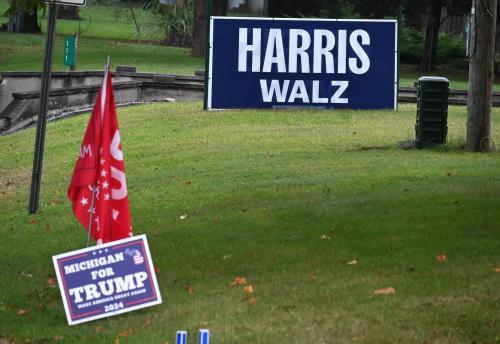
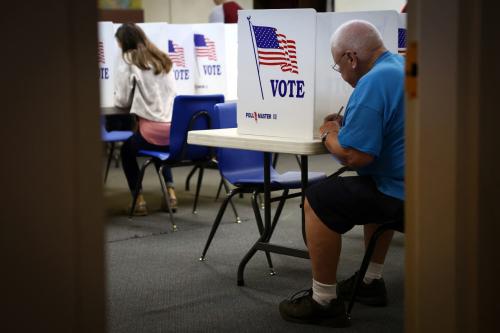

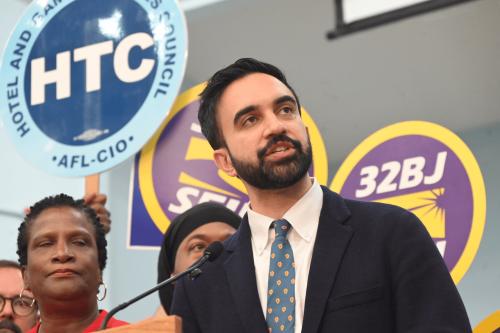

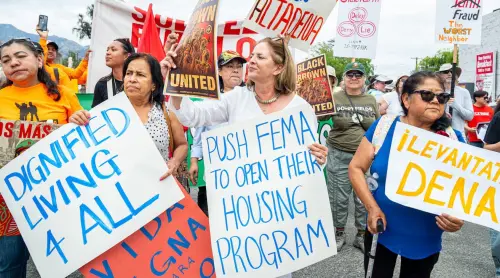
Commentary
What do we need to know about the swing state of Arizona?
October 14, 2024